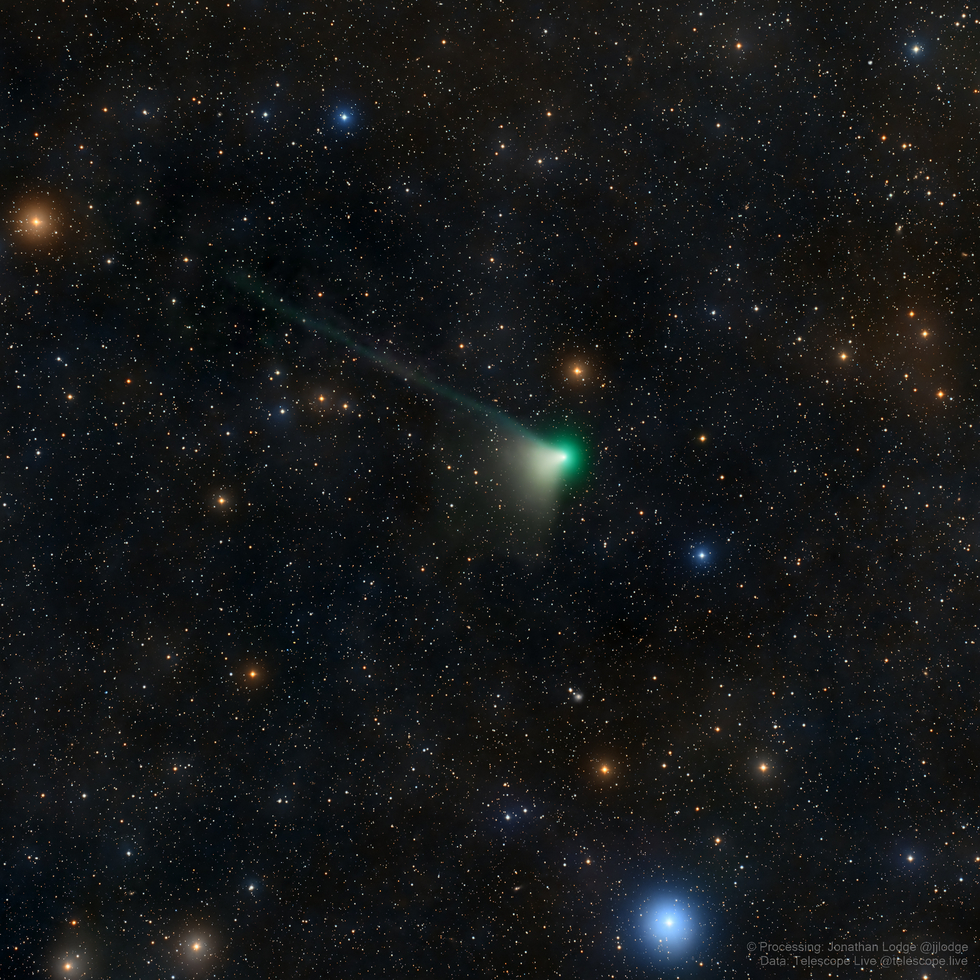COMET C/2022 E3 (ZTF)
COMET C/2022 E3 (ZTF)
C/2022 E3 (ZTF) is a long period comet from the Oort cloud that was discovered by the Zwicky Transient Facility on 2 March 2022. The closest approach to Earth will be on February 1, 2023, at a distance of 0.28 AU (42 million km). The first naked eye observations of the comet occurred on the 16th and 17th of January, with the comet having an estimated magnitude of 5.4 and 6.0 respectively. Strong solar wind from a coronal mass ejection caused a disconnection event of the ion tail of the comet on January 17, making it appear broken.
During its closest approach to Earth it will appear near the north celestial pole and be located within the Camelopardalis constellation. On 10 to 11 February, the comet will pass 1.5 degrees from Mars and, on 13 to 15 February, will pass in front of the Hyades star cluster.
The green color is likely due to the presence of diatomic carbon, chiefly around the comet's head. The C2 molecule, when excited by the solar ultraviolet radiation, emits mostly in infrared, but its triplet state radiates at 518 nm (nanometers). It is produced by photolysis of organic materials evaporated from the nucleus. It then undergoes photodissociation, with a lifetime of about two days, at which time the green glow appears in the comet's head, but not the tail.
JPL Horizons shows the barycentric outbound orbit to be bound to the Sun+Jupiter system at an epoch in the year 2050, but with an unrealistic maximum distance beyond the Oort cloud. Using a heliocentric orbit at epoch 2495 with just the Sun's mass shows the comet unbound to the Solar System. The comet will either leave the Solar System altogether or return in many millions of years depending on perturbations from outgassing or perturbations while in the Oort cloud.
During its closest approach to Earth it will appear near the north celestial pole and be located within the Camelopardalis constellation. On 10 to 11 February, the comet will pass 1.5 degrees from Mars and, on 13 to 15 February, will pass in front of the Hyades star cluster.
The green color is likely due to the presence of diatomic carbon, chiefly around the comet's head. The C2 molecule, when excited by the solar ultraviolet radiation, emits mostly in infrared, but its triplet state radiates at 518 nm (nanometers). It is produced by photolysis of organic materials evaporated from the nucleus. It then undergoes photodissociation, with a lifetime of about two days, at which time the green glow appears in the comet's head, but not the tail.
JPL Horizons shows the barycentric outbound orbit to be bound to the Sun+Jupiter system at an epoch in the year 2050, but with an unrealistic maximum distance beyond the Oort cloud. Using a heliocentric orbit at epoch 2495 with just the Sun's mass shows the comet unbound to the Solar System. The comet will either leave the Solar System altogether or return in many millions of years depending on perturbations from outgassing or perturbations while in the Oort cloud.
SPECIFICATIONS
Telescope
Takahashi FSQ-106EDX4 (Spa-3)
Camera
FLI PL16083
Location
IC Astronomy Oservatory, Spain
Date of observation
27th - 31st December
Filters
Astrodon LRGB
Processing
PixInsight, RC Astro Tools, Photoshop
Credits
Data: Telescope Live, Processing: Jonathan Lodge



